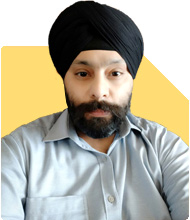My Mom Has 3L of Savings. How Do I Invest It? Seeking Financial Advice.
Ramalingam Kalirajan |8093 Answers |Ask -Follow
Mutual Funds, Financial Planning Expert - Answered on Jul 26, 2024
He has an MBA in finance from the University of Madras and is a certified financial planner.
He is the director and chief financial planner at Holistic Investment, a Chennai-based firm that offers financial planning and wealth management advice.... more

Financial Planning - Need help with my dad's pension. My mom (49y) has around 3L in savings (from my dad's pension) and will be getting 35,000 per month as the pension. How do I go about investing this? This is her savings, so don't want something very risky and we won't need the cash in short term. Let me know the geniuses of the sub. I am thinking a mix of High dividend MFs + Debt bonds on wint wealth. Please do let me know as we need the interest/dividend income every once in a while if not every month. I have a corporate insurance with 5L cover and Personal Insurance with 25L cover which will 3x in 3 years (currently 37.5L + 25L).
Investment Strategy
Safety and Stability
For your mother's savings, prioritize safety and stability. Choose investments with low risk but steady returns.
Debt Mutual Funds:
Ideal for conservative investors.
Provide stable returns with lower risk.
High Dividend Mutual Funds:
Offer regular dividend payouts.
Ensure the funds have a good track record.
Monthly Pension Allocation
Use the monthly pension wisely. A portion should be invested, while another should cover regular expenses.
Regular Expenses
Monthly Budget:
Allocate Rs. 35,000 to monthly expenses.
Ensure essential expenses are covered.
Surplus Investment
Systematic Investment Plans (SIPs):
Invest a portion of the pension surplus in SIPs.
Choose balanced funds for moderate growth.
Emergency Fund
Maintain an emergency fund to cover unexpected expenses.
Liquid Funds:
Invest a part of the savings in liquid funds.
Easily accessible in emergencies.
Suggested Investment Mix
Debt Investments
Government Bonds:
Safe and reliable with guaranteed returns.
Suitable for long-term security.
Fixed Deposits (FDs):
Bank FDs offer guaranteed interest rates.
Choose banks with high credit ratings.
High Dividend Mutual Funds
Dividend Yield Funds:
Invest in funds with consistent dividend payouts.
Ensure the portfolio is diversified.
Insurance Considerations
Your insurance coverage is good. Corporate insurance covers Rs. 5 lakhs, and personal insurance covers Rs. 25 lakhs. This will triple in three years, offering Rs. 112.5 lakhs in total. Ensure policies are regularly reviewed to keep up with needs.
Regular Monitoring
Track Investments:
Regularly review the performance of investments.
Adjust the portfolio based on market conditions.
Professional Guidance:
Seek advice from a Certified Financial Planner.
Ensure investments align with financial goals.
Final Insights
Investing your mother’s savings in low-risk options ensures stability. Use a mix of debt and high dividend mutual funds for steady income. Regularly monitor and adjust the investments to stay on track.
Best Regards,
K. Ramalingam, MBA, CFP,
Chief Financial Planner,
www.holisticinvestment.in
You may like to see similar questions and answers below
Ramalingam Kalirajan |8093 Answers |Ask -Follow
Mutual Funds, Financial Planning Expert - Answered on Jul 19, 2024
Ramalingam Kalirajan |8093 Answers |Ask -Follow
Mutual Funds, Financial Planning Expert - Answered on Jul 10, 2024
Anil Rego |388 Answers |Ask -Follow
Financial Planner - Answered on Jul 26, 2024
Inderpaul Singh |46 Answers |Ask -Follow
Leadership Coach - Answered on Mar 12, 2025
Inderpaul Singh |46 Answers |Ask -Follow
Leadership Coach - Answered on Mar 12, 2025
Nayagam P P |4322 Answers |Ask -Follow
Career Counsellor - Answered on Mar 12, 2025
Nayagam P P |4322 Answers |Ask -Follow
Career Counsellor - Answered on Mar 12, 2025
Nayagam P P |4322 Answers |Ask -Follow
Career Counsellor - Answered on Mar 12, 2025
Nayagam P P |4322 Answers |Ask -Follow
Career Counsellor - Answered on Mar 12, 2025
Nayagam P P |4322 Answers |Ask -Follow
Career Counsellor - Answered on Mar 12, 2025
Nayagam P P |4322 Answers |Ask -Follow
Career Counsellor - Answered on Mar 12, 2025
Nayagam P P |4322 Answers |Ask -Follow
Career Counsellor - Answered on Mar 12, 2025
Nayagam P P |4322 Answers |Ask -Follow
Career Counsellor - Answered on Mar 12, 2025



















